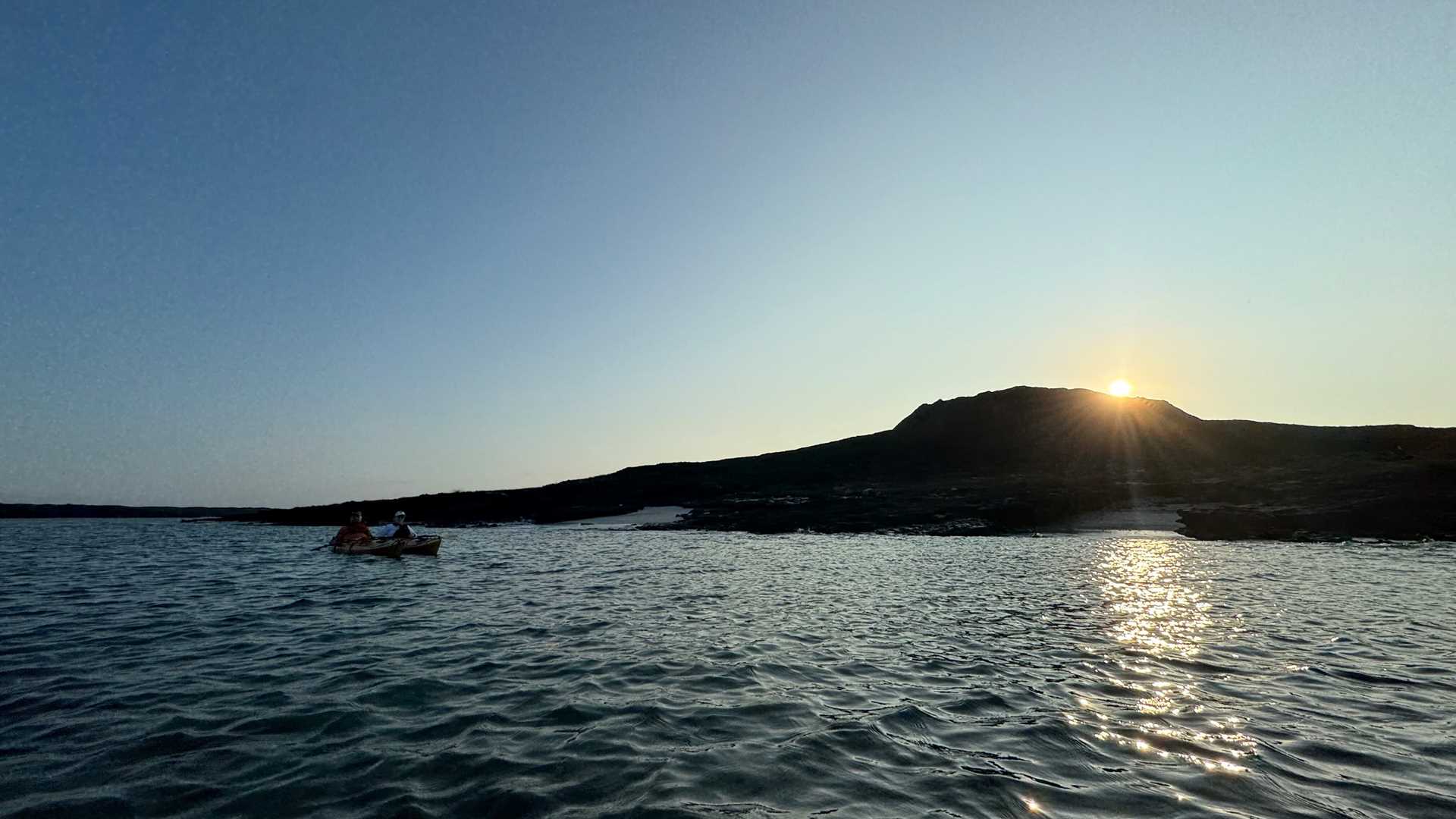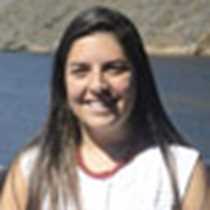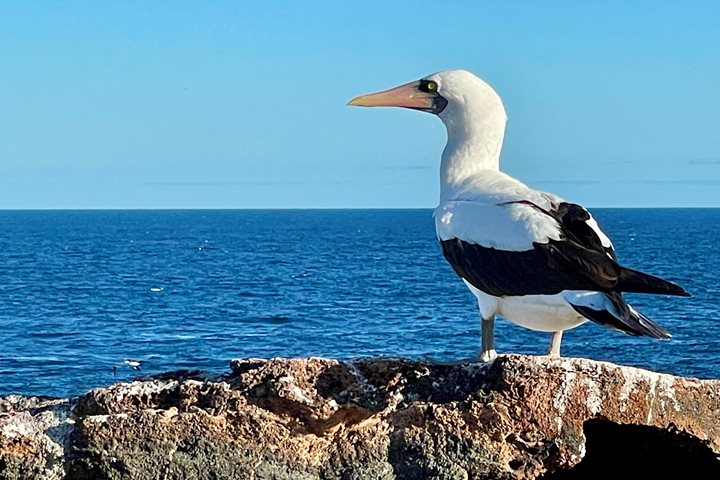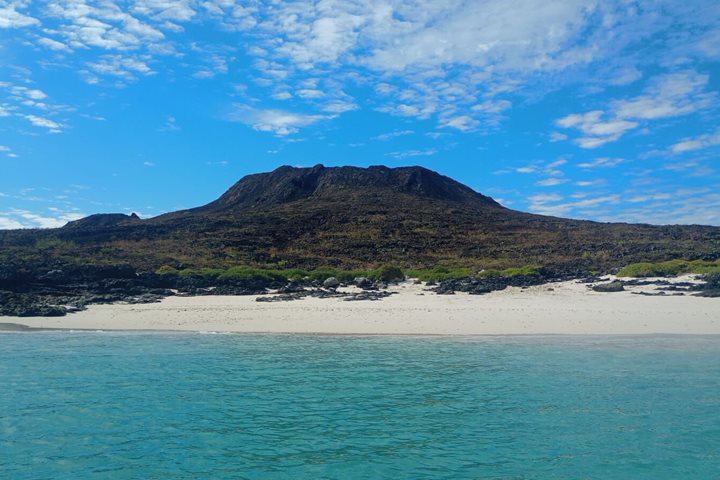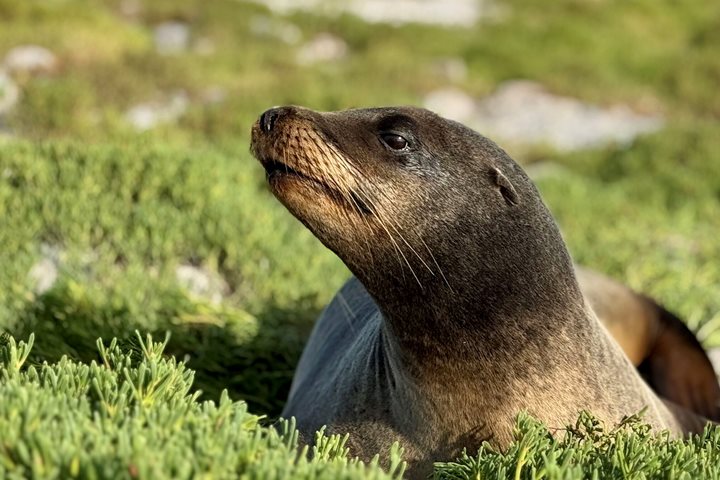We started the day with a few prebreakfast activities, including stretching at Chinese Hat islet and kayaking in its stunning channel. We began exploring the area very early, which allowed us to spot various species in action, including sea lions and land and marine birds. After enjoying a delicious breakfast, we got ready for water activities. During lunch, we sailed to Sullivan Bay, a stunning recently erupted lava flow with amazing geological features. The bay is home to the popular Galapagos penguin, with a small population of the only penguins living in the tropics. We ended the day with a beautiful sunset and enjoyed crossing the equator. It was another wonderful day in paradise!
- Daily Expedition Reports
- 24 Jan 2025
Sombrero Chino and Sullivan Bay, 1/24/2025, National Geographic Islander II
- Aboard the National Geographic Islander II
- Galápagos
Roberta Schiess, Naturalist
Born and raised in the Galápagos, Roberta Schiess Bahamonde’s grandparents were among the first permanent inhabitants of Santa Cruz Island, arriving from Switzerland in the 1940s. Her mother is also a naturalist guide in the Galápagos, so this is a p...
Read MoreShare Report
Galápagos Escape: A 7-Day Voyage
VIEW ITINERARYRelated Reports
6/13/2025
Read
National Geographic Islander II
Santiago Island
We started our day early in the morning at Chinese Hat. As our kayaks glided in the water, we had our first opportunity to watch Galapagos penguins swimming beside us. As we got closer to the shoreline, lava herons and blue-footed boobies stood motionless on the lava, watching our groups pass. In the late morning, we had the opportunity to have a very intimate moment with Galapagos penguins while they were hunting black-striped salemas. Penguins swam back and forth, trying to get as many fish as possible. The lunar landscape of Chinese Hat gave us an opportunity to observe the candelabra cactuses that grow on this recently formed lava field. In the afternoon, our expedition took us to Sullivan Bay. During a hike, we enjoyed one of the most amazing lava landscapes in the Galapagos. The visitor site invited us to think deeply about the genesis of life in the Galapagos Islands and how plants and animals arrived and established themselves here. As we returned to the ship, a beautiful sunset invited us to reflect on the geological and geographic qualities that make the Galapagos truly unique.
6/12/2025
Read
National Geographic Islander II
South Plaza and Santa Fe Islands
Our expedition on board National Geographic Islander II took us to the captivating South Plaza and Santa Fe Islands. We were treated to an extraordinary day of wildlife encounters and breathtaking landscapes, leaving us with a deeper understanding of the island’s unique ecosystems.

